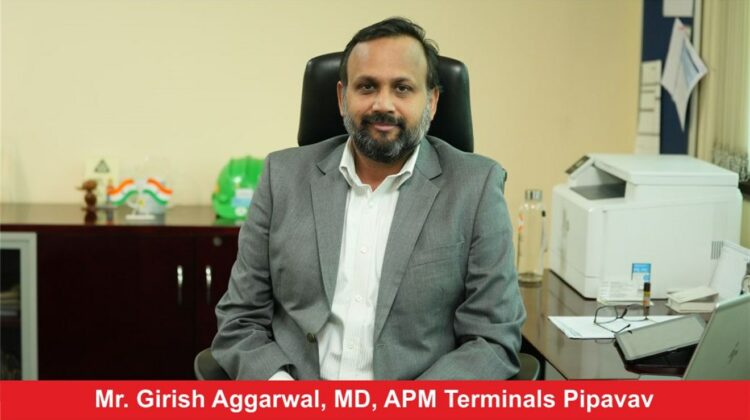
Pipavav Port eyes car exports, liquid imports for growth : Girish Aggarwal, MD, APM Terminals Pipavav
PIPAVAV : Car exports and liquid cargo imports are expected to drive growth for APM Terminals Pipavav (Gujarat Pipavav Port Ltd), which runs Pipavav port in Gujarat. The port targets handling 1.5 lakh car exports this year — 54 per cent more than last year — and eyes 17 per cent growth in liquid cargo, which includes LPG gas imported under the Pradhan Mantri Ujjwala Yojana (PMUY).
“Both liquid cargo and RoRO [roll-on, roll-off ships] are mainstays of our growth, at least currently. We see a strong export market on the RoRo front. Currently I am ready to handle 250,000 cars a year. This year we will end up with 140,000-150,000 cars,” Girish Aggarwal, Managing Director of APM Terminals Pipavav, told.
During the last financial year, Pipavav handled 97,100 car exports, which included Honda cars sent back to Japan and despatches from the Maruti Suzuki factory in Hansalpur, Ahmedabad. To handle rising car exports, the company said it has readied a 62,000 sq m RoRo staging area, or open stackyard, at the port.
“Maruti has announced 2-4 million cars by 2030 and exports will be a big part of that story. So car exports out of India are slated to grow till 2030 and we want to partner in that journey,” he added.
In the first quarter of FY25, RoRo volumes grew by 175 per cent, with many passenger vehicles exported from the port. On Tuesday, Maruti Suzuki India said that the first consignment of 1,600 ‘Made in India’ SUV Fronx left for Japan from Pipavav port. Fronx is its second model, after Baleno, to be exported to Japan.
Liquid cargo
The port official said the company will spend ₹720 crore capex to build a new liquid cargo jetty at Pipavav. “LPG remains a strong import that is riding on the back of the Ujjwala Yojana. We are therefore adding capacity on the liquid side,” Aggarwal said.
The port can currently handle 2 million tonnes of liquid cargo a year. “We did 1.2 million tonnes last financial year, and this year we hope for 1.35 million tonnes. We have announced a new liquid jetty with a capacity of 3.2 million tonnes, which will take total liquid cargo capacity beyond 5 million tonnes,” he added. The liquid volumes handled by Pipavav grew by 32 per cent in the first quarter.
The focus on RoRo and liquid cargo comes at a time when the port’s dry bulk cargo volumes last fiscal dipped by 31 per cent to 2.71 million tonnes, compared to the previous year, mainly due to decreasing fertilizer imports, the company said.
In the first quarter of the current financial year, the port handled 552,000 tonnes of dry bulk cargo, lower by 18 per cent from a year ago. Container volumes, too, fell by 17 per cent for the quarter ending June 2024.
“It is essentially because of two reasons — the red sea crisis; and a network change that Maersk effected towards the end of last year. I suspect that the Red Sea crisis will continue through the year, but shipping lines are stabilising and the number of skipped calls have reduced this quarter. Going forward the container market should start to look up,” Aggarwal said.
Renewal of concession
The company is operating the port on a 30-year concession agreement dated September 30, 1998, with Gujarat Maritime Board (GMB) and Government of Gujarat. With the concession up for renewal, the company says its proposed ₹3,200 crore phase-1 of investments, which includes further development of the waterfront at Pipavav, depends on the renewal. “The government has told us that they are working on a policy document or framework which will be applicable to all ports which GMB manages. This policy document, which outlines the key framework for concession extension, should be out soon,” Aggarwal said.
The concession extension is needed to plan future investments, which are capital-intensive and entail two to three years of planning, construction and commissioning, the company says.
